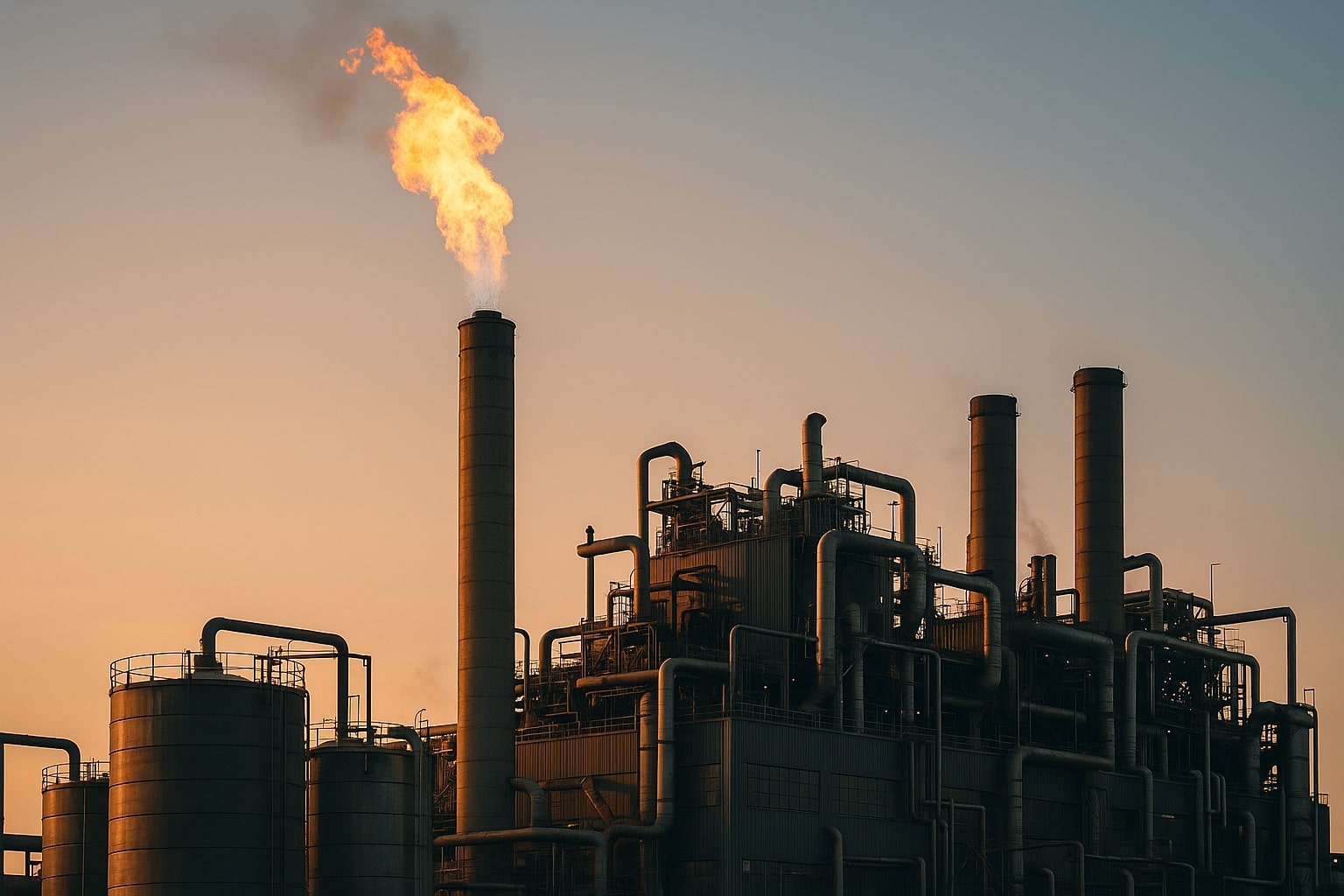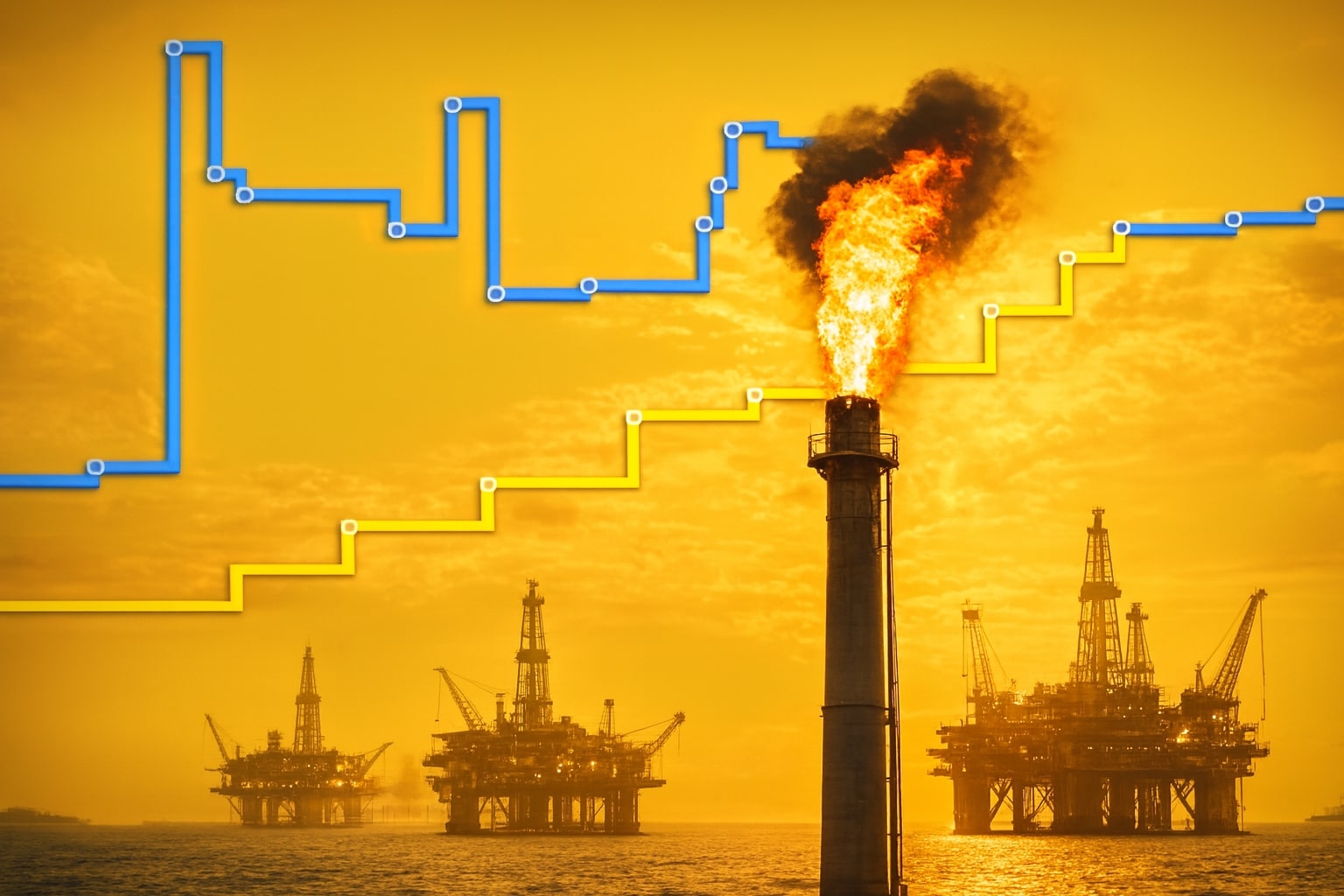
Why Are Natural Gas Prices Pushing Toward $3.72? The Forces Shaping NG=F’s Surge
What’s Behind the Surge in U.S. Natural Gas Prices? Technical Breakouts and Geopolitical Tensions | That's TradingNEWS
Natural Gas Price Outlook: Why Prices Are Rising and What’s Next for NG=F
The price of U.S. Natural Gas (NG=F) has been on an upward trajectory recently, driven by a combination of technical factors, geopolitical uncertainties, and shifts in supply-demand dynamics. As natural gas continues to make headlines, it's important to understand the underlying reasons for these price movements, as well as to assess where prices might be headed in the coming months. In this analysis, we explore the factors driving these price changes, with a particular focus on technical analysis, supply issues, and geopolitical risks.
Technical Analysis: Key Support Levels and Price Targets for NG=F
One of the main reasons Natural Gas prices have been rising is due to technical factors in the market. As of today, NG=F is trading above key support at $3.47, which corresponds with the 50-day Exponential Moving Average (EMA). This has provided a solid foundation for price stability and marked a crucial level for traders. A break above this support point has the potential to trigger further upside, with the next resistance level positioned at $3.72. If NG=F manages to surpass this level, we could see prices continue to climb toward $4.00.
However, the market also faces resistance in the form of Fibonacci retracement levels, particularly the 38.2% level, which has historically been a challenge for bulls. Should the price break below $3.50, the next technical level to watch would be the 200-day EMA at $3.27, followed by the $3.00 level. Traders are cautiously watching these levels, as they may indicate whether a new bullish trend is forming or if the market will face significant pullbacks.
Geopolitical Factors: Impact of U.S. and Chinese Trade Tensions
Geopolitical events have also been influencing the rise in natural gas prices, particularly the ongoing trade tensions between the U.S. and China. As both countries continue to deal with tariffs and trade restrictions, these developments are creating uncertainty in the global energy markets. Specifically, U.S. energy firms like Diamondback Energy and Coterra Energy have announced reductions in their rig activity. Diamondback, for example, has confirmed plans to scale back its capital budget in favor of prioritizing free cash generation. Similarly, Coterra is reducing its Permian investment and decreasing the number of rigs operating in the area.
These production cuts are expected to reduce overall supply in the U.S. and, coupled with tightening global supplies, could contribute to upward pressure on NG=F. While both companies have stated they will maintain their natural gas-focused rigs, the reduction in overall energy production could be a key factor in sustaining price increases in the near term.
Supply and Demand Factors: Storage Levels and LNG Exports
The supply and demand balance for U.S. natural gas is another significant factor contributing to price increases. The latest American Petroleum Institute (API) data highlighted tighter supply conditions, with lower production levels from U.S. energy firms as mentioned earlier. Additionally, LNG exports from the U.S. have been surging, with record shipments of liquefied natural gas providing strong demand for natural gas. As countries around the world—particularly in Asia—increase their consumption of LNG, the U.S. natural gas market stands to benefit.
The U.S. Energy Information Administration (EIA) has forecasted that LNG exports will continue to rise throughout 2025, further boosting natural gas demand. This is particularly relevant as U.S. natural gas exports play a pivotal role in balancing domestic supply and international demand.
However, storage levels remain a concern. As of now, natural gas storage is still well below year-earlier levels, and any significant increase in demand during the summer months could put additional pressure on supply. The market is anticipating an increase in inventory builds in the coming weeks, and if the gap between supply and demand widens, prices could experience significant volatility.
Weather and Seasonal Influences on NG=F
Another important factor driving natural gas prices is the weather. Seasonal weather patterns are playing a key role in shaping the demand outlook for natural gas, especially as we enter the warmer months. According to NatGasWeather.com, recent forecasts for cooling degree days (CDD) show that the upcoming weeks will experience higher-than-normal temperatures across the Lower 48 states, which is expected to increase the demand for electricity and, consequently, natural gas for power generation.
This early onset of warmer weather has already begun to influence market behavior, as traders anticipate higher natural gas consumption for cooling purposes. As the summer approaches, this increased demand could help tighten balances in the natural gas market, further supporting prices.
The Role of Freeport LNG and Power Outages
Freeport LNG, a key player in the U.S. natural gas export market, has had a significant impact on price fluctuations recently. A power interruption at the Freeport LNG facility led to a temporary drop in prices, as the market reacted negatively to the potential supply disruption. However, as of now, the facility has resumed operations and is back to 90% of its baseline capacity, which has quelled concerns and allowed prices to recover.
The Freeport LNG outage is a reminder of the fragility of the natural gas supply chain, particularly when it comes to major export facilities. Despite the short-term disruption, the overall trend remains bullish, with NG=F recovering from the initial drop and showing signs of upward momentum as supply fears dissipate.
Natural Gas Price Outlook: Will NG=F Continue to Rise?
Looking ahead, NG=F's price will likely continue to be influenced by a combination of technical, geopolitical, and seasonal factors. The upcoming summer months could present both challenges and opportunities for natural gas prices, as weather patterns drive increased demand, but storage levels and supply disruptions remain key risks to watch.
Given the current price movement and fundamental factors at play, traders are advised to closely monitor support and resistance levels, as well as broader geopolitical developments, including U.S.-China trade negotiations and production updates from major natural gas companies. If the weather turns hotter than expected, and LNG exports continue to rise, the price of NG=F could see additional gains, potentially surpassing $4.00 in the coming months. However, any significant supply disruptions or changes in demand could lead to heightened volatility, making it essential for traders to remain vigilant.
In summary, while the natural gas market faces challenges from various quarters, the combination of technical support, rising LNG exports, and cooling degree day forecasts provide a strong foundation for NG=F prices to continue their upward trajectory in the near term. Traders should be prepared for potential volatility, as the market navigates the interplay between supply constraints, seasonal weather effects, and global economic conditions.
That's TradingNEWS
Read More
-
SMH ETF: NASDAQ:SMH Hovering at $350 With AI, NVDA and CHIPS Act Fueling the Next Move
16.12.2025 · TradingNEWS ArchiveStocks
-
XRP ETFs XRPI and XRPR: Can $1B Inflows Lift XRP-USD From $1.93 Back Toward $3.66?
16.12.2025 · TradingNEWS ArchiveCrypto
-
Natural Gas Price Forecast: NG=F Falls to $3.80–$3.94 as Warm Winter Kills $5.50 Spike
16.12.2025 · TradingNEWS ArchiveCommodities
-
USD/JPY Price Forecast - USDJPY=X Slides, BoJ 0.50% Hike, Fed Cut and NFP Set the Next Big Move
16.12.2025 · TradingNEWS ArchiveForex



















